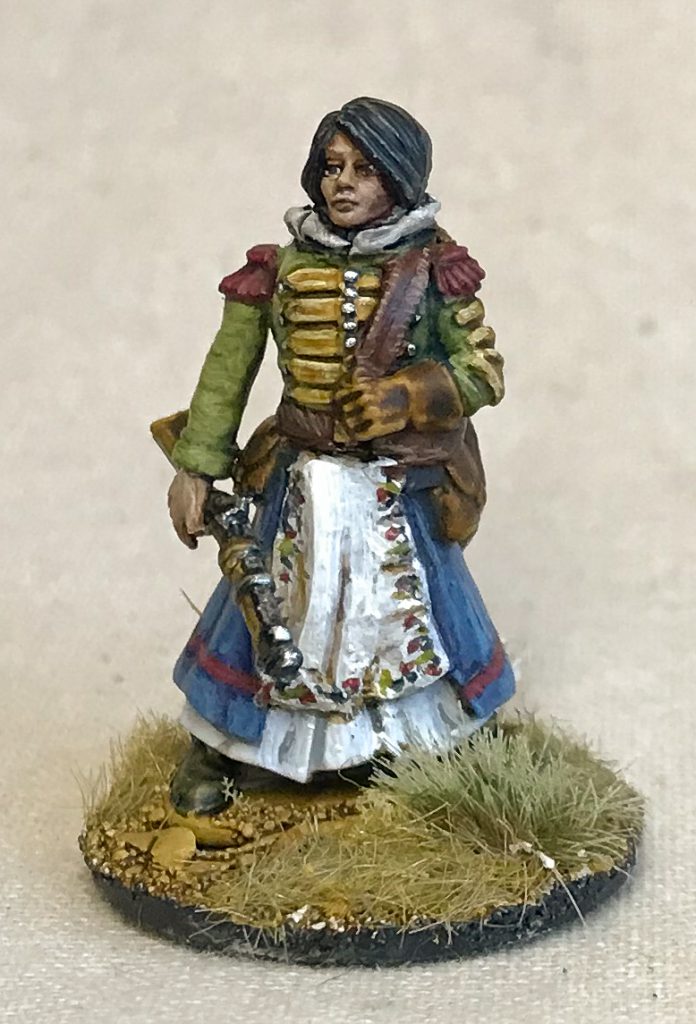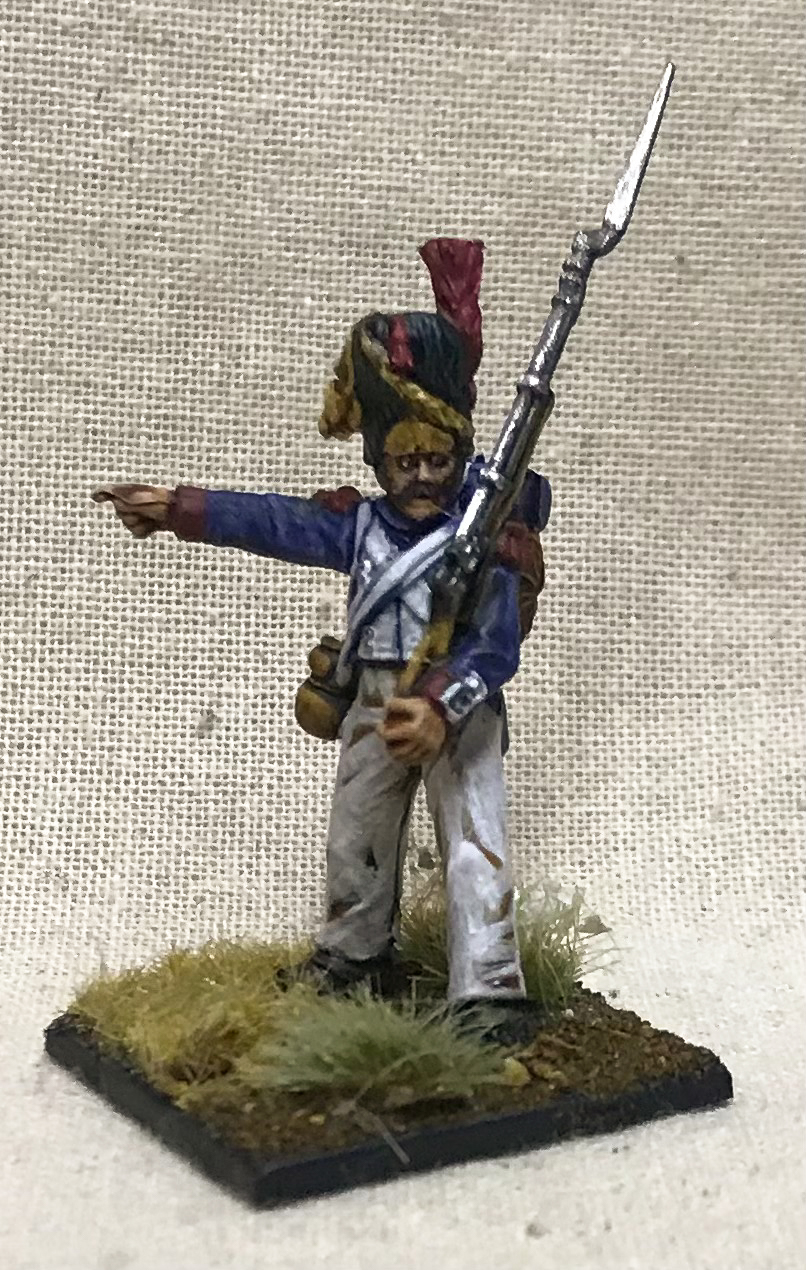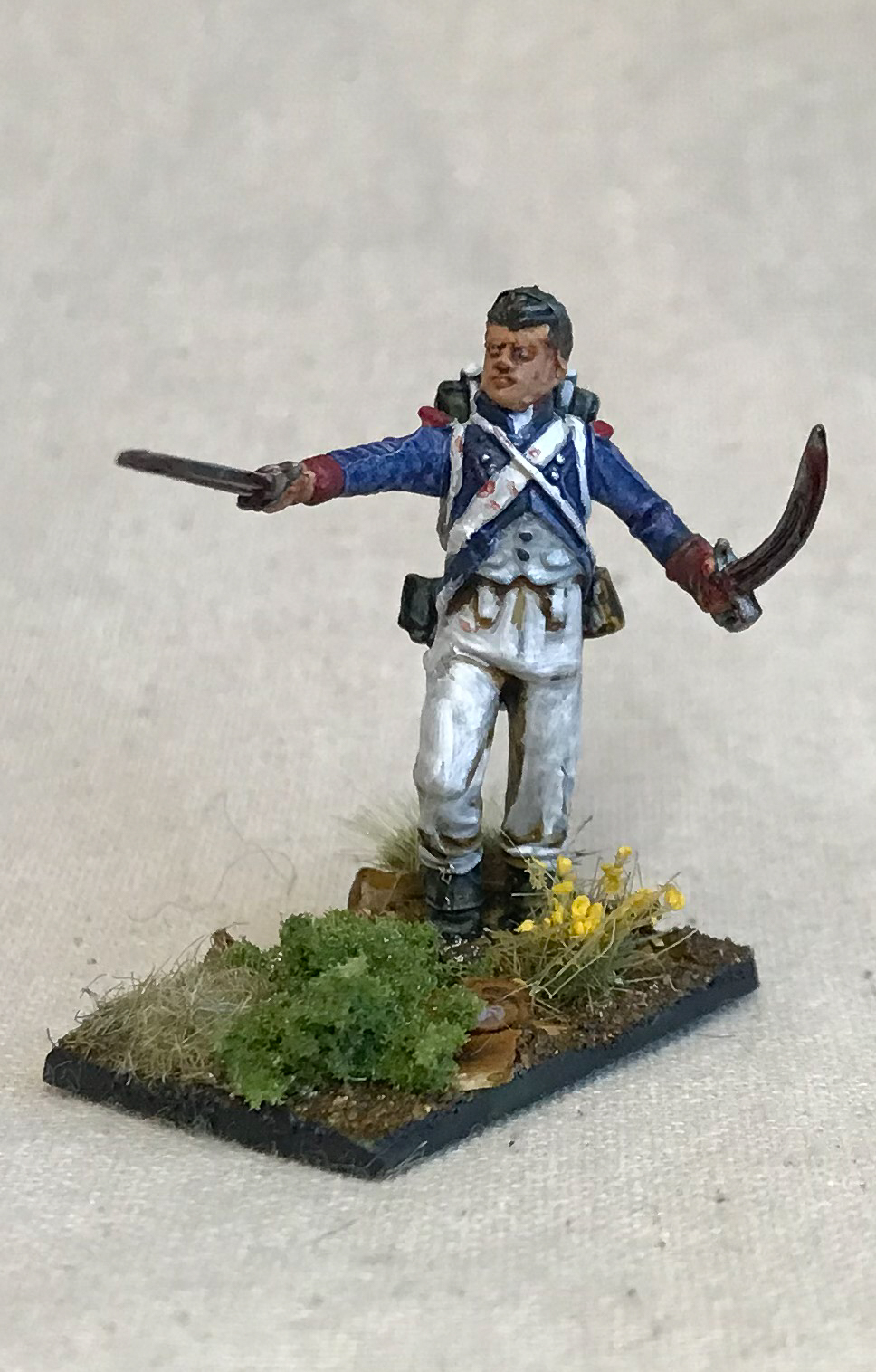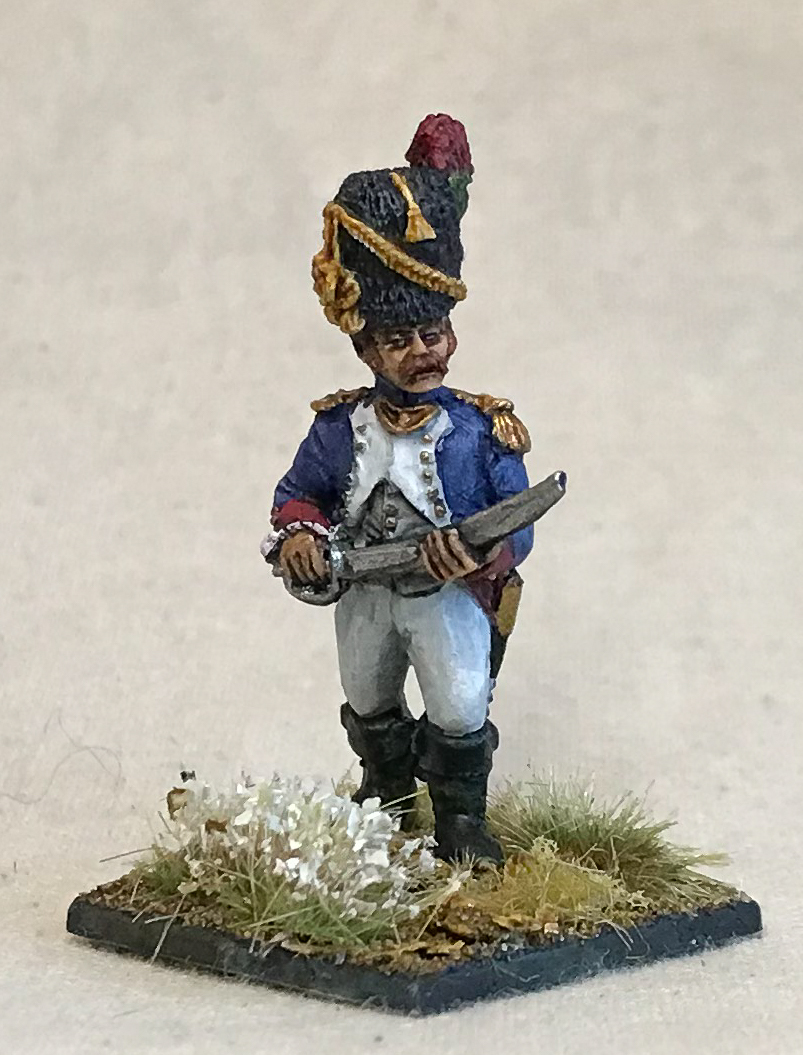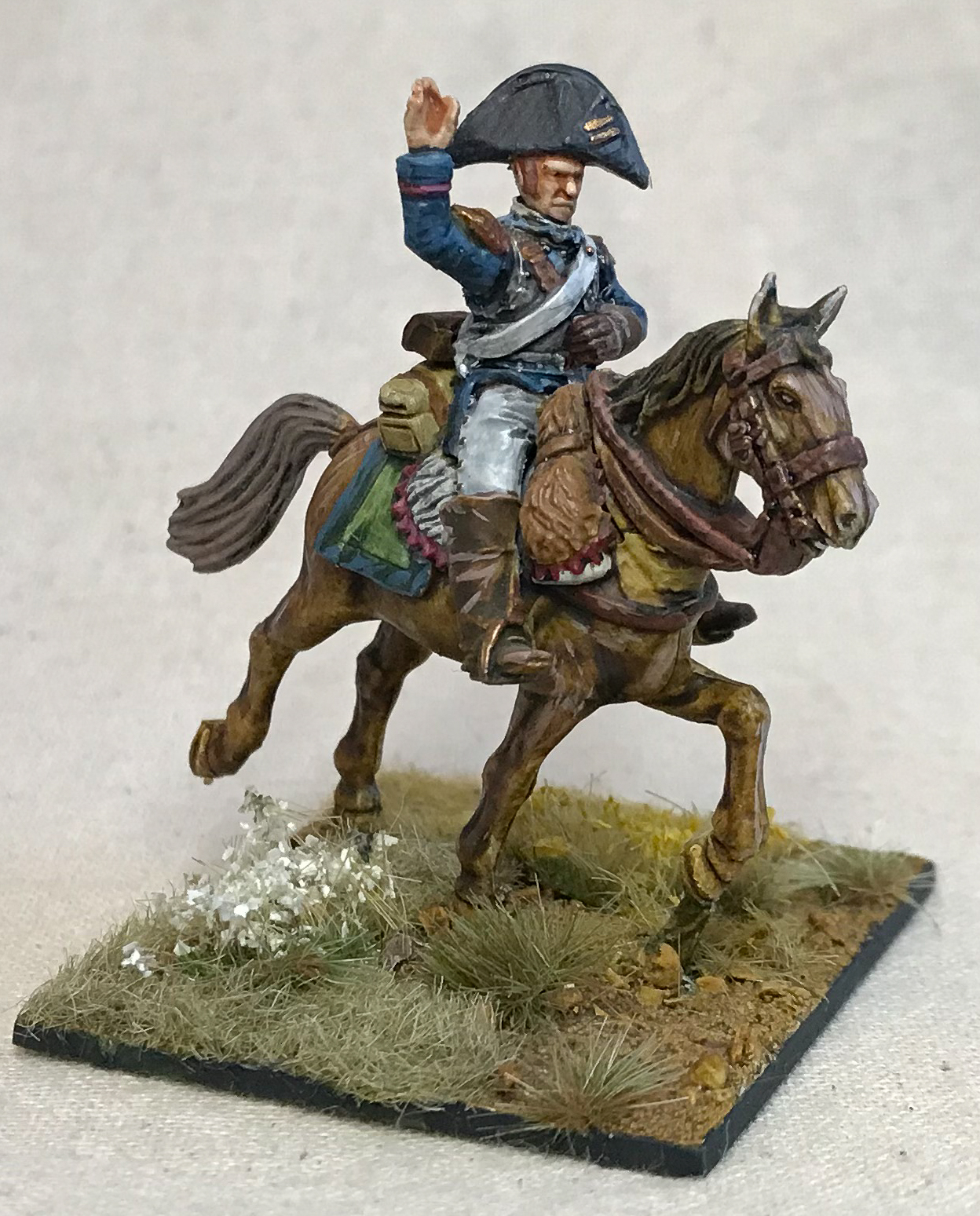Across the board stands an immaculate line of French Infantry. Sixty grizzled veterans of the Chasseurs a Pied glower at you, readying muskets and arranging their spectacular facial hair. Thirty impetuous, blooded veterans of the Turin Velites stand poised to charge into combat, to do with the bayonet what lead and powder cannot. A stack of books, read and half read, weighs down one corner of the table. But where is your opponent? Is he putting the finishing touches to another battalion, or sensibly planning the long-term viability of this project? No! He’s trying to work out how to sculpt petticoats and ruffs, pondering the degree to which his regular opponents will accept realistic-looking casualty markers and wishing everyone would just settle on one exact scale to use for “28mm”.
My first forays into Napoleonic gaming have been fun, line crashing out volleys of lead, columns marching at the attack into shattering combats, and delightfully written mid century histories heaping near-hagiographic praise onto Napoleon and the Marshals of France. But they’ve lacked a little character, a little joie de vivre, so this month I’ve been looking at, building and learning about some of the little extras an army needs to bring un soupcon de verite to the tabletop. In case you are worried, the cod french will cease, maintenant.
This time round we’re all about support models, because of a quote that crops up everywhere with uncertain attribution – “an army must be Bred, Fed and Led”.
Bred
Bred: an army must have soldiers. Soldiers continue to muster on my painting desk, at a burnout-threatening rate. This time it’s been a unit of the Young Guard. While using “Bred” to talk about them is indeed a bit on the nose, it’s my article and I’ll write it how I want to.
Just like last time with the Middle Guard Velites, exactly what the Young Guard was varies by period. In the days of the Consular Guard (1799-1804), the Guard was all veterans, but as it expanded into the Imperial Guard (1804 onwards), the best and brightest of the annual conscript intake began to be included into the Guard. In 1810 with the formal division of the Guard into Old, Middle and Young, these younger conscripts were put into their own units. Initially intended to some extent to act as a training school for NCOs and Junior Officers, the Young Guard took the best conscripts, trained them to a high degree, and worked them hard. Accounts of massive energy, commitment and high casualties abound. The Young Guard seem to have suffered more than many in Russia, dying in droves under the guns at Krasnyi, and freezing to death in the retreat. Several regiments were wiped out. For boys taken into the army at 18 – some would not have been significantly older by the time they were fighting – they were often seen as slight, beardless and fey, especially when – as at Krasny they were held firm by the Old Guard.
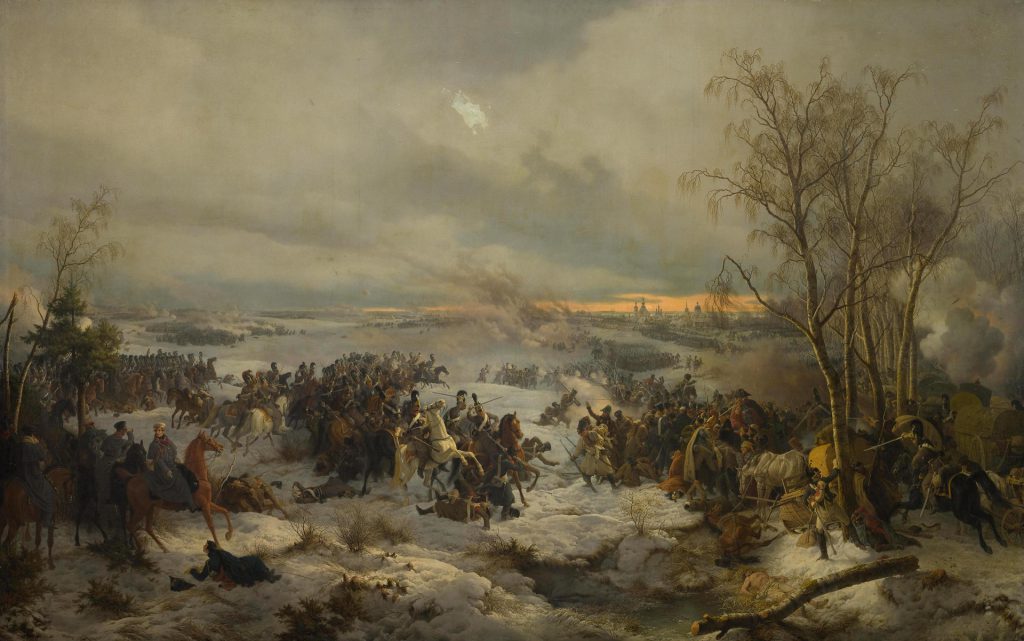
In 1813, there were huge changes afoot for the Young Guard as Napoleon cast around for as many soldiers as possible. I’ll go into them with another Young Guard unit another time. This unit are from the Flanquers-Chasseurs regiment, raised from the sons of woodsmen, groundskeepers, mountain guides and hunters working for the state, intended to guard the flanks of the Guard. They were supposed to be “natural” light infantry, recruiting from families and contexts that should have given them a leg up on learning the difficult and tricksy ways of the light infantryman. The Prussians had used a similar system in the century prior, and recruiting for supposed inherited or trades-based traits was widespread throughout the 17th to 20th centuries (and beyond). But this is the French Guard, and so nothing is simple – it is entirely possible that the Flanquers-Chasseurs were essentially just line infantry, with Napoleon getting bored of endless identical regiments, throwing a little variety into his uniform and naming conventions!
This unit seems to have been almost wiped out during the Russian campaign, many of them dying in Poland and Lithuania. Crossing the Neman river, General Fezensac recorded “I noticed among others the regiment of flankers, composed of very young men… also this regiment was the first destroyed; already the soldiers were dying of exhaustion on the road“. In 1813 the regiment was reconstituted, based on the last remnant of the Flanquers who had survived Russia.
I’ll be using these guys as the light troops they theoretically were. I sorely need a skirmishing unit to use – on individual bases – in Sharp Practice and smaller scale games, and with their sharp green and yellow piped uniforms providing some variety amongst the blue and white, these are perfect for the growing army. These models are the Wargames Foundry Flanquers-Chasseurs and they are small, chunky lads, very different to the Perry and Victrix metals and plastics I’ve been working with. Getting them felt very much like a proper foray into your dad’s Napoleonics – solid chunks of characterful white metal at 22-25mm scale. Nice models, but painting chunkier, old-style metals is something I haven’t done in a while, and it shows!
Fed
An army must have food. A French army, in particular, must have bread and wine, and plenty of it. A ruleset may (or may not) include rules and mechanics for food, but either way I have plenty of hungry soldiers, and have made no provision for the tide of supplies, requisitioning and foraging that supported them. Into the breach steps the first of my Cantinière, the particularly French, usually female and sometimes musket-toting support staff for the army. Cantinieres, or Vivandieres, were women attached to the army to supply troops with food, drink and smaller provisions and kit. Depending on when and where we’re talking about, this could be a formal attachment under military discipline or a matter of following shortly behind advancing units. They were absolutely everywhere the French fought, sometimes found in the midst of the fighting, supplying soldiers with water, wine and bread even amidst the fiercest fire. There are hundreds of anecdotes of enraged Cantiniere picking up muskets, or carrying their own arms and pistols, and cracking off shots alongside the line.
There’s a popular image of a woman in a decidedly feminine version of her associated regimental uniform and I’ve leaned into that a little with Anne-Marie here. This is anachronistic – the trend towards quasi-military uniform comes later in the mid 19th century, but I think an opportunistic, intelligent and above all resourceful sutler wouldn’t have been able to do her job without picking up the occasional bit of kit, so here she is dressed in a slightly tailored (thanks, rounded file) Cavalry Trumpeter jacket.
Anne-Marie is a bits box special, with pieces from Frostgrave Female Wizards, Perry heavy French cavalry, the Victrix guard box and a Kroot kit bought on first release back in 2001. The dress piece was originally empire line, and I’ve ended up using it as a much lower waist – so Anne-Marie is not just fierce, but at 34mm to the eye, she’s very much heroic scale. I couldn’t resist giving her a shortened musket from the Dragoon kit, so she’s one of the many Vivandieres who stood, and fought, for the Guard and the Emperor. I enjoyed making and painting her enough that I think a small corps of Vivandieres/Cantinieres will be keeping my batallions well supplied with brandy, wine and jenever shortly.
Led
I am finally at a point where I can put together a real, full force for at least one game system. The recommended base force for Sharp Practice (French Regulars 1813), is five groups of eight line, six skirmishers and three leaders. Sharp Practice characters can be up to four tiers of leader (with IV being the top tier), and at the scale the game plays at represent everything from NCOs to Captains – or even a Colonel or Chef de Battalion leading an audacious action. It’s definitely time I had some leaders, so making one for each tier gives me some characters, background to get researching/writing and a chance to paint a little differently.
Using the Perry Elite company and Battalion kits, I have an Old Guard Grenadier Caporal addressing the ranks over the shattered remains of a line regiment and Sergent-major Angelique Brulon, providing much needed discipline and control to the Velites, swords in hand. These are my tier 1 and 2 leaders.

Hey, Sergeant! There’s British over there in the Margins! 
Christ, I had a follow up joke for this one but I’ve totally blanked
Moving up the ranks, A Chasseur Officer from Front Rank Miniatures is my Tier III Capitane, and a plastic Perry Cuirassier with a suitably nice hat acts as my Tier IV Colonel. This gives me one commander model for each unit I’ve been working on so far – and there’s a spoiler there for next time – and an overall commander. These are likely to be moved around, promoted (and demoted) as the army expands, but for now, I have the iron will, determination and at least a little of the élan the army needs.

Oh Capitane my Capitane 
They call me the Colonel, and I ride a badly painted horse
One of the nice, and crazy, things about the Napoleonic army was the semi-meritocratic promotion system. Amongst the Marshals of the Empire, the highest military title Napoleon could bestow apart from his own, were men who had risen from the ranks of the revolutionary and royal armies. Andre Massena, the “dear child of victory”, the greatest non-Napoleon general of the early Napoleonic period, had started as a private in the Royal Italian Regiment. Bernadotte, who would eventually reign as King of Sweden until 1844, establishing the royal house that still reigns to this day, started off his military career as a private in Corsica. With skill, luck, bravery, the right timing, staying on the popular side of political struggles and occasionally a good word from your wife, a Marshal’s baton really was in each soldier’s knapsack.
French Officers were expected to lead – not necessarily from the front, but certainly to know what their men were capable of and to accompany them through it. While by no means universal, bravery was rewarded and demanded at all levels. Many of the Marshals still led storming parties, cavalry charges, scouted out river crossings and were involved in a thousand desperate, roll of the dice actions, right up until the end. Not only does this give me a perfect excuse to paint, say, noted crazy man Marshal Ney, and use the model as the man himself in even the smallest skirmish, it means I can come up with some truly great background for each of my officers. Now they’re painted – on with the writing.
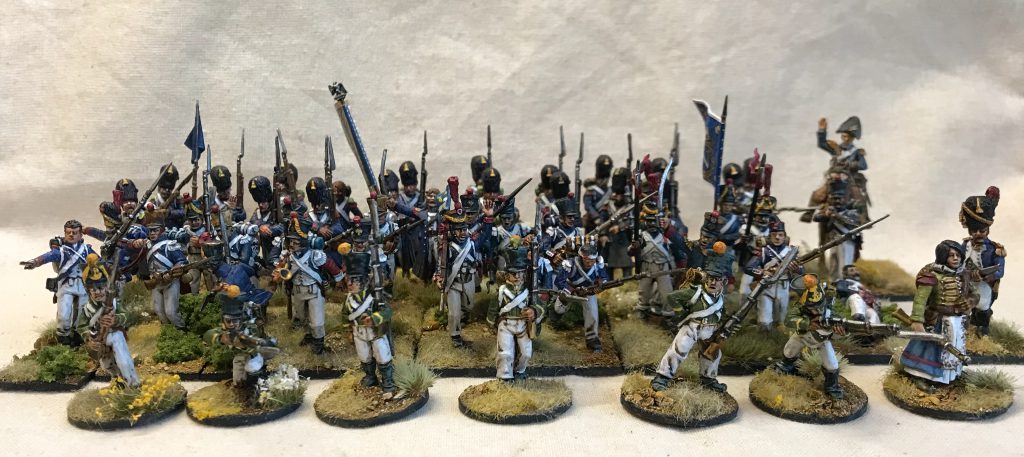
Read
The other bit of this strange self imposed challenge has been powering through the ill-thought through stack of second hand books to make this whole thing at least partially informed. The legend of Napoleonic biography has it that more books have been written about the man himself than about anyone other than Jesus, which from even a quick trip around a second hand bookshop seems to be fairly accurate. Books about Napoleon are plentiful enough that without restraint, I’ll end up having a couple of shelves full – and guess what? When it comes to buying miniatures, hunting out books and wallowing in self-pity, I am a man who lives entirely without restraint. I am trying, at the moment, to get the grand view in addition to the military aspects that give me a good overview of what the men I’m making in 28mm scale did, rather than focusing in on Napoleon and his life. Out of everything I’ve read so far, I have two really solid recommendations that have been very helpful – if you’re looking for a much better understanding of the period than my rambling, these are worth checking out.
Napoleon and His Marshals, AG Macdonnell
Macdonnell was a journalist and writer in the early-mid 20th century, in addition to a first world war veteran and satirical novelist. All of that tells very clearly in Napoleon and His Marshals, an unabashed and totally open boys-own adventure story of “Star of Corsica” and his best mates and worst enemies, and how they turned out to be the same people. As a ripping yarn, it’s up there with the best of them, and written in a very light, accessible and probably intended for children, way. Macdonnell writes the twists and turns of the Napoleonic period as a personal relationship between Emperor and his Generals – great man approach to history turned up to 11, but written so well (and so classically British author in the 1930s) it’s hard to fault. Don’t look here for any detail – but for exclamation marks! Love! Betrayal! Heroism! Marshal Ney! Bourbon treachery! and everything else to get excited about.
Swords around a Throne, John Elting
Elting’s history is THE book on the Grande Armee – the army Napoleon forged and wielded to such impossibly great effect, and then continued to wield long after he should have stopped. It’s the full, complete, history of the army but simultaneously a pop history. Well researched, but also drawing much from anecdotes. Open and accessible, but also drowning in detail. A strange balance, but Elting makes it work – as much as his research is occasionally questionable, it’s always bloody interesting. It could be a much deeper history but instead goes broad and fun, with a balance of respect and mockery that lets Eltings incredibly dry voice walk you through the army (and more or less only the army). It should come with any French starter set for the period – it is the essential companion for your toy soldiers.
Napoleonic Badass of the Week
So I’m reading 1812 at the moment, and it’s tragedy on tragedy – war, death, fire, murder and everyone freezing to death. It’s fucking grim. One particular figure of the story will emerge in his own entire article at some point soon, but General Francois Roguet gets the accolade this time. Commander of the Young Guard during the retreat, Roguet legendarily continued to cold water shave every single day, even when the temperatures dropped to -20. His servants – and his men – froze to death, but every day of the long, terrible retreat, he continued to shave. As a fundamentally feather-soft man who finds every and any excuse not to shave, this strikes me as impossibly bad-ass.
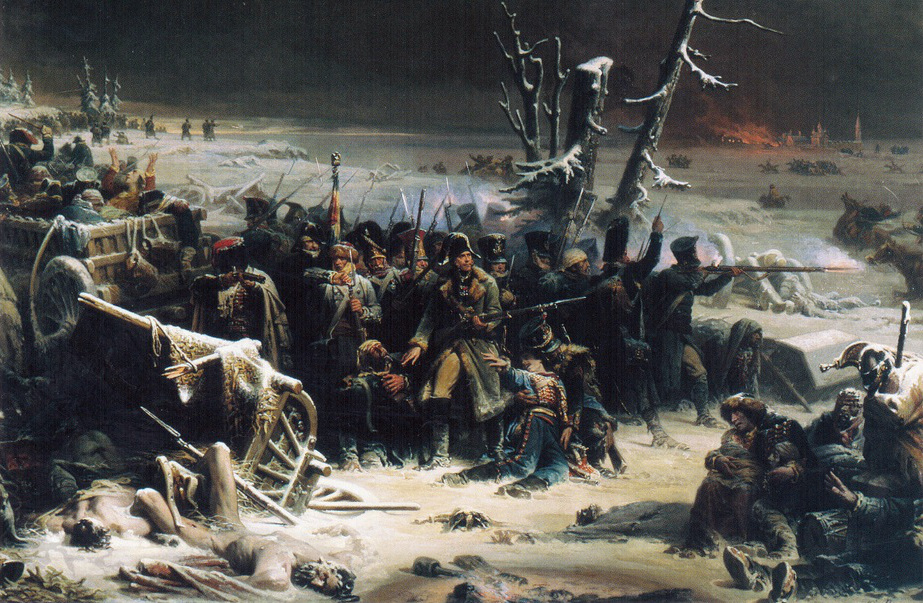
Now I’ve read up, added leaders and support, and fully finished three units, the army is ready to play with, and it’s time to start really scheduling in some games and getting experience under my belt. Onward, to Black Powder, and Sharp Practice, and Chosen Men, and maybe some Silver Bayonet, but whatever the system, on to glory, on to victory, on to walk in the footsteps of Napoleon and his men, the perfect, resolute march of the Guard!
Next time: I inevitably lose repeatedly.
Have any questions or feedback? Drop us a note in the comments below or email us at contact@goonhammer.com.


